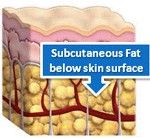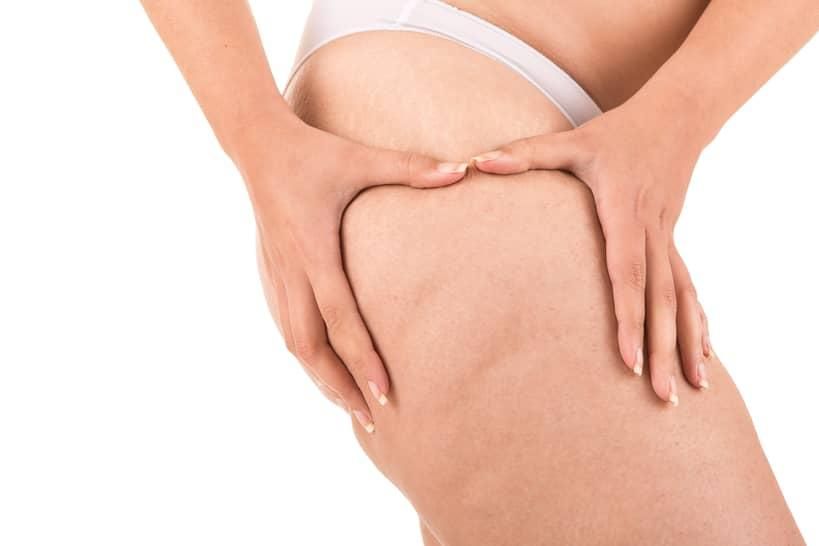 Have you heard of Cellulaze and want to know more? No matter how hard you exercise or diet for some it seems like you can’t ever reduce or get rid of that embarrassing cellulite. Does your’s keep you out of shorts in the summer or make you self-conscious while in a bathing suit or hot tub?
Have you heard of Cellulaze and want to know more? No matter how hard you exercise or diet for some it seems like you can’t ever reduce or get rid of that embarrassing cellulite. Does your’s keep you out of shorts in the summer or make you self-conscious while in a bathing suit or hot tub?
What if you found out there was a new FDA approved method for diminishing the appearance of cellulite called “Celluaze”…would you want to know more?
This article will satisfy your curiosity about the looming “Cellulaze craze” for the treatment of cellulite. Just approved in the US in 2012, although available longer in Europe and Canada, you’ll learn what it is, how it works, what you can expect with a treatment, how much it costs and how long the results will last.
What is cellulite?
 The dimpled appearance of skin, caused by fatty deposits located just below the surface of the skin is referred to as “cellulite”, “cottage cheese thighs” and the “orange peel” look.
The dimpled appearance of skin, caused by fatty deposits located just below the surface of the skin is referred to as “cellulite”, “cottage cheese thighs” and the “orange peel” look.
It can be found anywhere from your abdomen and pelvic region to your thighs, calves, upper arms and your backside.
This lumpy looking deposit is subcutaneous fat, meaning just below the outermost layer of your skin’s surface that forms around the connective tissue bands that hold down your skin.
It is estimated that 85% of adult women develop cellulite whether overweight or thin, active or sedentary. While this statistic is depressing, it also tells us that we’re not alone.
How cellulite is formed
While the actual cause is not clearly defined or understood based on my research, there are several theories that have prominence among many of the authority sites like WebMD, the Mayo Clinic and Wikipedia. Among these theories are:
- Your hormones – This ranks as #1 in the likelihood they play a critical role in your cellulite development. It is thought that estrogen, insulin, noradrenaline, thyroid hormones, and prolactin are all contributors to cellulite formation.
- Your genes – Genetics may play a role in cellulite development. Genes may predispose a person to certain characteristics associated with cellulite, such as your gender, your race, whether your metabolism is slow or fast, your distribution of fat just underneath the skin, and the overall performance of your circulatory system.
- What you eat – Generally it is thought that those who eat too much fat, carbohydrates, or salt and too little fiber are more likely to be candidates for cellulite.
- Your lifestyle – Those who smoke, those with a sedentary lifestyle who do not exercise, and those who sit (like behind a desk) or stand in one position for long periods of time are prone to cellulite.
- Check your underwear – Did you know that underwear with tight elastic across your backside (limiting blood flow) may contribute to the formation of cellulite?
A Cellulaze Treatment in a nutshell
 When non-invasive treatments like changing your diet and exercising like a maniac don’t give you the results you want BUT you are not ready to assume any risk associated with the surgical options like liposuction, then Cellulaze may be a less invasive option to consider.
When non-invasive treatments like changing your diet and exercising like a maniac don’t give you the results you want BUT you are not ready to assume any risk associated with the surgical options like liposuction, then Cellulaze may be a less invasive option to consider.
It uses the heat from a thin laser inserted under your skin to warm fat cells that have formed in-between connective tissues and under the surface of your skin to melt these cells.
This heating also sets in motion a process whereby your skin’s underlying structure becomes partially restored. As the fat cells melt, the raised areas on the surface of your skin lower and smooth out.
A thinner skin surface is what makes the fat cells under the surface visible. Over time, this treatment will cause your skin’s surface to become thicker and more elastic.
Through thorough investigation and clinical trials, Cellulaze, following a single treatment, improved the appearance of cellulite for one year with few side effects.
Of all the patients that were surveyed, 93% were satisfied or very satisfied with their results following the one year anniversary of their treatment and all stated they would recommend the Cellulaze treatment to a friend. The clinical trial data also indicated promising improvements in skin quality noting that thicker, more elastic skin will help improve the overall appearance of cellulite by providing a smoother appearance.
What happens during a Cellulaze procedure?
- Your qualified physician or dermatologist will mark the areas of cellulite to be treated with a marker
- Tiny incisions will be made, about the size of the tip of a pen under local anesthetic so you feel no pain
- Procedure is done while you are awake
- Cellulaze laser fiber is threaded through a tiny tube (or cannula) and inserted through the incision sites
- Laser fiber, through heating, will level out fat bumps, release fibrous bands that compartmentalize fat and pull on skin
- Process will stimulate your collagen production to increase your skin’s thickness and elasticity for a smoother look
- The melted fat is gently pressed out
- The entire procedure, depending on the areas covered, will take around an hour
- There is no down time following treatment
How much does Cellulaze cost?
 The cost for a single treatment will vary based on the work you request and your geographical location.
The cost for a single treatment will vary based on the work you request and your geographical location.
This process in the US is newly FDA approved so the number of qualified physicians or dermatologists who can offer this service will increase over time.
Right now, costs start for small areas around $2,500 and can go as high as $12,000 or more depending on the size of the area where you have the procedure performed. As more facilities and clinics offer these treatments, the costs are likely to come down.


